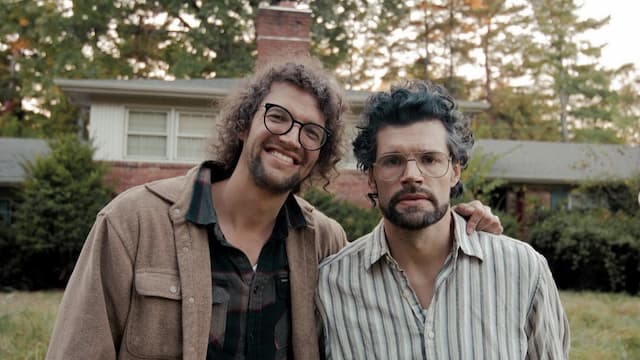Taking “Love for Mother Nature” to a Whole New Level
 Do you love the earth we live on? Love it enough to marry it?
Do you love the earth we live on? Love it enough to marry it?
Another term has entered our cultural lexicon: ecosexuality. According to the two self-proclaimed experts in ecosexuality, Annie Sprinkle, Ph.D., and Beth Stephens, Ph.D., “You don’t look at the Earth as your mother, you look at it as your lover.” (FWIW, it’s hard to take a person’s doctoral credentials seriously when she also promotes herself as a porn star.)
They claim that 15,000 people worldwide identify as ecosexuals, and they express this in a variety of ways: massage the earth with their feet, swim naked in a pond, tell the earth, “I love you. I can’t live without you,” talk dirty to plants, and recycle.
Whoa. Back the wagon up. We recycle at our house. Don’t you dare throw me in with people who talk dirty to the rhododendrons in their front yards.
And for those who really love the earth, yes, they can get married. Sprinkle and Stephens take the traditional wedding vows and apply them to things like the sky and the sea.
Thanks, but I think I’ll limit myself to recycling paper and plastic.
If it sounds like I’m making fun of the ecosexual movement … well, I AM. [Here is my source, but please do not consider it an endorsement of Women’s Health magazine.]
Can we have a … um, down-to-earth conversation about this?
Here’s what we share in common with the earth: We were both created by God. Beyond that, the earth was not created in God’s image; we were. We were created to have, first, a relationship with God, and second, a relationship with other people. Not the earth.
If God had ecosexuality in mind, He would not have said about Adam, “It is not good for the man to be alone. I will make a helper suitable for him” (Gen. 2:18). All the beauty of the earth surrounded Adam, but he was alone! God had no intention in Adam having a personal relationship with a hibiscus tree.
Let’s not sell ourselves short by worshiping the creation—even in all its beauty, majesty, and wonder—instead of the Creator. What this incredible earth does is point to the beauty, majesty, and wonder of the Creator, God Himself.
“The heavens declare the glory of God; the skies proclaim the work of his hands” (Ps. 19:1).
“When I consider your heavens,
the work of your fingers,
the moon and the stars,
which you have set in place,
what is mankind that you are mindful of them,
human beings that you care for them?
You have made them a little lower than the angels
and crowned them with glory and honor.
You made them rulers over the works of your hands;
you put everything under their feet:
all flocks and herds,
and the animals of the wild,
the birds in the sky,
and the fish in the sea,
all that swim the paths of the seas.Lord, our Lord,
how majestic is your name in all the earth!” (Ps. 8:3-9).
My wife, Mary, is a great example of what our “relationship” with the earth should look like. Being outside—being surrounded by nature—really draws her close to God. She doesn’t worship nature as god, but being surrounded by all the beauty and wonder of what God created draws her focus to the One who spoke it all into existence.
 We stood on the edge of the Waimea Canyon on the island of Kauai. I heard Mary sing softly,:
We stood on the edge of the Waimea Canyon on the island of Kauai. I heard Mary sing softly,:
O Lord my God, when I in awesome wonder
Consider all the works Thy Hand hath made,
I see the stars, I hear the mighty thunder,
Thy pow’r throughout the universe displayed,Then sings my soul, My Savior God, to Thee,
How great Thou art! How great Thou art!
I love this earth. but I’m in love with the One who created it for His glory and our enjoyment.
“Lord, our Lord, how majestic is your name in all the earth!”
Related posts: Love People, Not Objects
For a printable version: click here.
 post supports the study “Why Are We Even Here?” in
post supports the study “Why Are We Even Here?” in 



